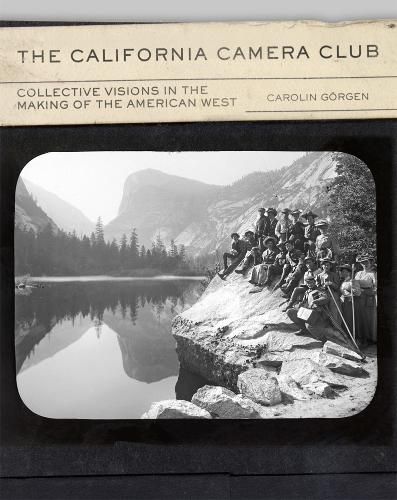Readings Newsletter
Become a Readings Member to make your shopping experience even easier.
Sign in or sign up for free!
You’re not far away from qualifying for FREE standard shipping within Australia
You’ve qualified for FREE standard shipping within Australia
The cart is loading…






With some 400 members, the California Camera Club was the largest photography network in the United States in the early twentieth century. In The California Camera Club, Carolin Goe rgen recaptures the lost history of this community - and reveals its critical but little-known role in defining the popular image of California, and the American West generally, for posterity.
At a time when hand-held cameras were multiplying and San Francisco was becoming the main venue for aspiring western photographers, the unknown but committed practitioners of the California Camera Club collectively pictured California as the dominant symbol of the American West. Detached from the cultural hubs of the East Coast, club members were instead closely tied to an influential circle of western artists, entrepreneurs, politicians, and environmentalists, all of whom were determined to promote California through the increasingly accessible medium of photography. Members deployed new technology and worked outdoors, producing an unprecedented number of images - in prints, exhibitions, magazines, and lantern slides - that would forever inform our understanding of California photography as an outdoor practice rooted in the western environment. Goe rgen begins her account with the first photo-exhibitions of the 1880s and the formation of a vibrant exchange network of photo excursionists. She then explores how the Club survived the 1906 San Francisco earthquake and fire to become a crucial source of support for a new, now well-known, generation of photographers by the time of the Panama-Pacific International Exposition in 1915.
Though instrumental in promoting individual photographers' careers - as in the case of Ansel Adams - the club's more significant contribution emerged in its collaborative nature and outdoor efforts. In telling its story, Goergen offers a new view of the history of photography and the collective composition of an enduring picture of the American West.
$9.00 standard shipping within Australia
FREE standard shipping within Australia for orders over $100.00
Express & International shipping calculated at checkout
With some 400 members, the California Camera Club was the largest photography network in the United States in the early twentieth century. In The California Camera Club, Carolin Goe rgen recaptures the lost history of this community - and reveals its critical but little-known role in defining the popular image of California, and the American West generally, for posterity.
At a time when hand-held cameras were multiplying and San Francisco was becoming the main venue for aspiring western photographers, the unknown but committed practitioners of the California Camera Club collectively pictured California as the dominant symbol of the American West. Detached from the cultural hubs of the East Coast, club members were instead closely tied to an influential circle of western artists, entrepreneurs, politicians, and environmentalists, all of whom were determined to promote California through the increasingly accessible medium of photography. Members deployed new technology and worked outdoors, producing an unprecedented number of images - in prints, exhibitions, magazines, and lantern slides - that would forever inform our understanding of California photography as an outdoor practice rooted in the western environment. Goe rgen begins her account with the first photo-exhibitions of the 1880s and the formation of a vibrant exchange network of photo excursionists. She then explores how the Club survived the 1906 San Francisco earthquake and fire to become a crucial source of support for a new, now well-known, generation of photographers by the time of the Panama-Pacific International Exposition in 1915.
Though instrumental in promoting individual photographers' careers - as in the case of Ansel Adams - the club's more significant contribution emerged in its collaborative nature and outdoor efforts. In telling its story, Goergen offers a new view of the history of photography and the collective composition of an enduring picture of the American West.